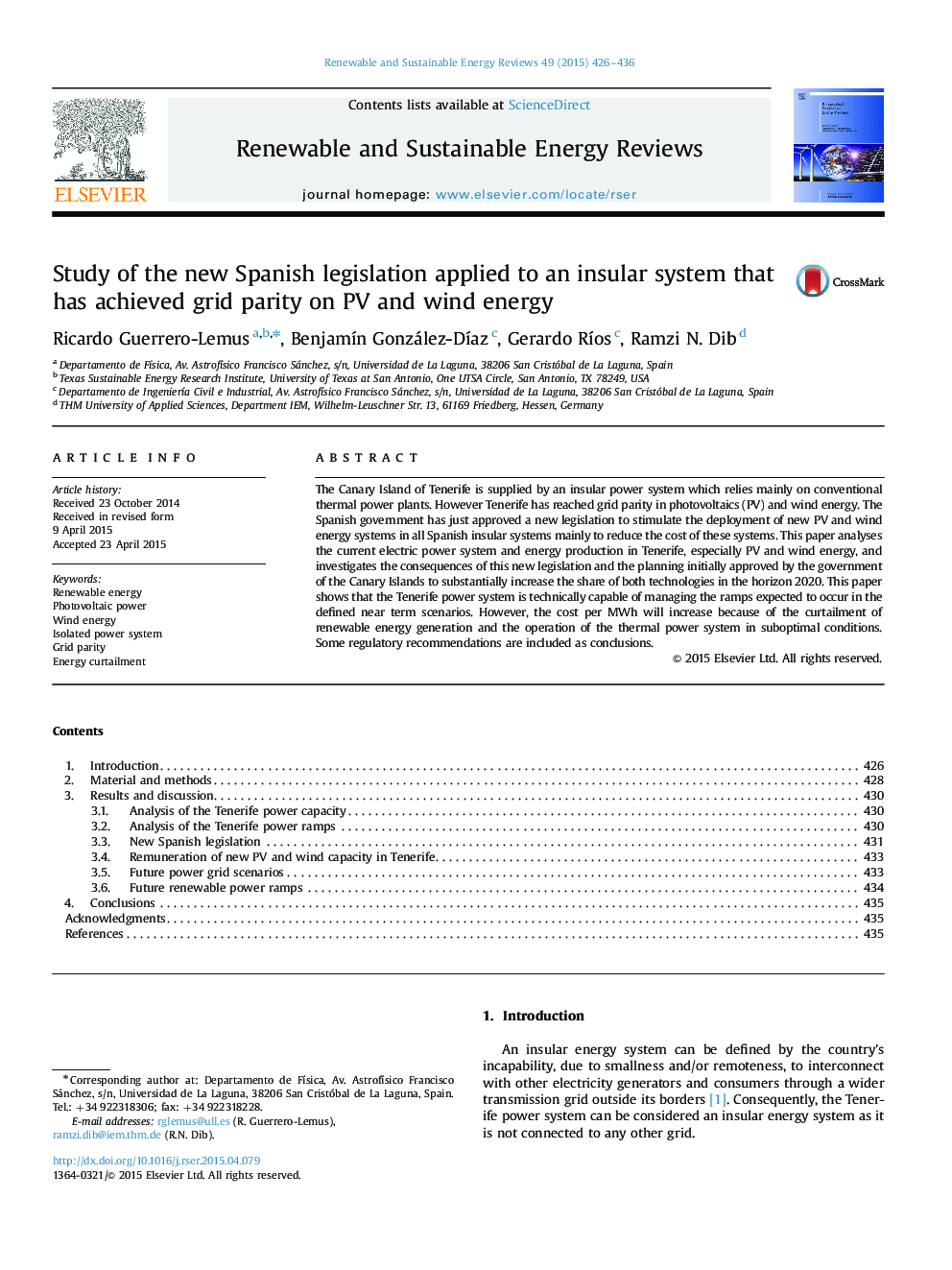| Article ID | Journal | Published Year | Pages | File Type |
|---|---|---|---|---|
| 8116596 | Renewable and Sustainable Energy Reviews | 2015 | 11 Pages |
Abstract
The Canary Island of Tenerife is supplied by an insular power system which relies mainly on conventional thermal power plants. However Tenerife has reached grid parity in photovoltaics (PV) and wind energy. The Spanish government has just approved a new legislation to stimulate the deployment of new PV and wind energy systems in all Spanish insular systems mainly to reduce the cost of these systems. This paper analyses the current electric power system and energy production in Tenerife, especially PV and wind energy, and investigates the consequences of this new legislation and the planning initially approved by the government of the Canary Islands to substantially increase the share of both technologies in the horizon 2020. This paper shows that the Tenerife power system is technically capable of managing the ramps expected to occur in the defined near term scenarios. However, the cost per MWh will increase because of the curtailment of renewable energy generation and the operation of the thermal power system in suboptimal conditions. Some regulatory recommendations are included as conclusions.
Related Topics
Physical Sciences and Engineering
Energy
Renewable Energy, Sustainability and the Environment
Authors
Ricardo Guerrero-Lemus, BenjamÃn González-DÃaz, Gerardo RÃos, Ramzi N. Dib,
